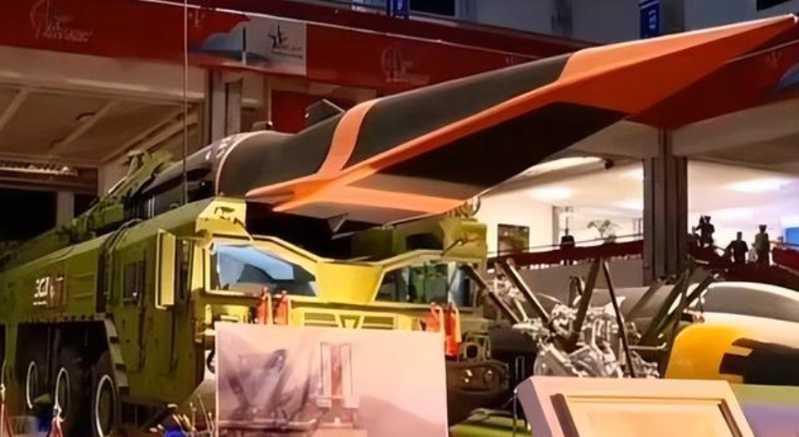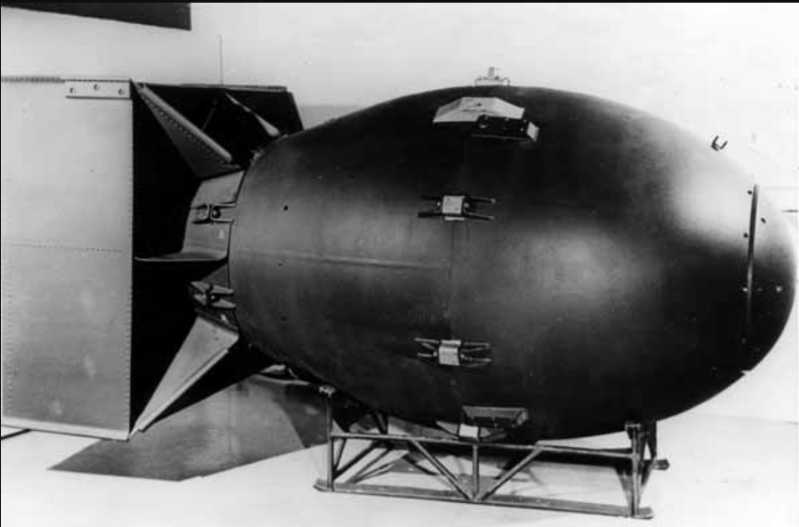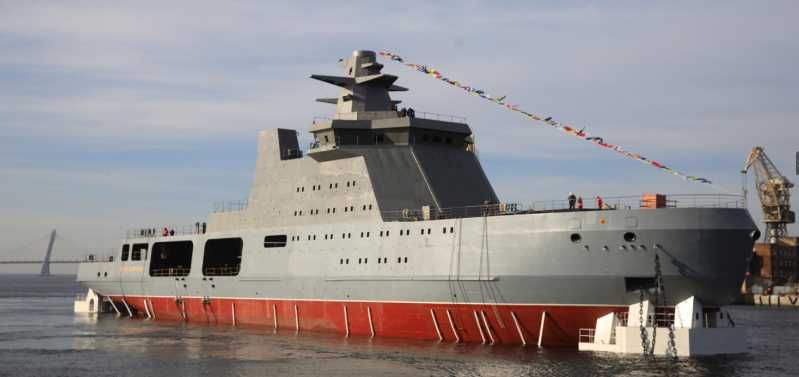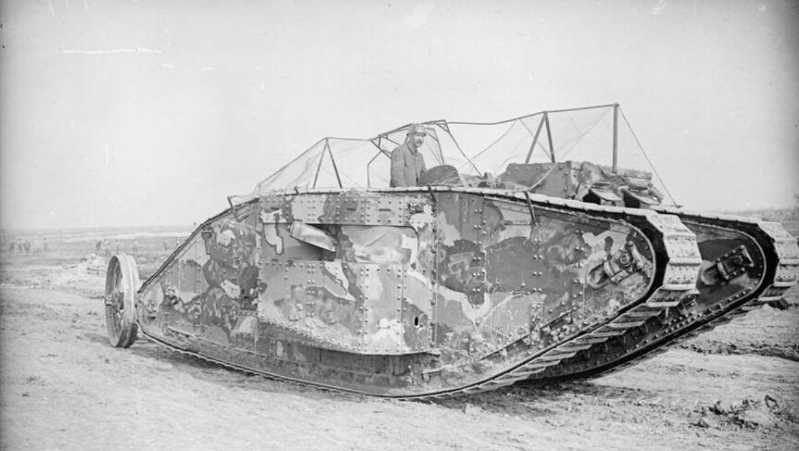The Fujian, the second domestically built aircraft carrier of the Chinese Navy, which uses electromagnetic catapult technology, is undergoing intensive mooring tests. Good news has come from China’s new generation of aircraft carriers. During this year’s two sessions, a reporter from the Hong Kong media "Hong Kong Commercial Daily" interviewed General Yuan Huazhi, the political commissar of the Navy. General Yuan Huazhi said that there is no technical bottleneck in China’s aircraft carrier construction. As for whether the fourth aircraft carrier will use nuclear power, he said "it will be announced soon." The construction of the fourth aircraft carrier will also continue to enhance China’s maritime strength. Yuan Huazhi emphasized that China builds aircraft carriers not to compete with the United States, but to protect the country’s sovereignty and territorial integrity and protect the country’s rights and interests. Senior PLA generals have always been frank and forthright in media interviews, never making empty promises or firing blanks. All previous statements regarding China’s new domestically-produced weapons and equipment were later confirmed. This time, the statement made by Political Commissar Yuan Huazhi undoubtedly means that the fourth aircraft carrier is "stable"! China’s nuclear-powered aircraft carrier is about to be unveiled!
Look at the new generation of domestically-produced aircraft carriers from the official publicity pictures
Before, whether it was the "Liaoning", "Shandong" or "Fujian" ship, before its official appearance, the most accurate way to guess its appearance design was often from the People’s Navy, China Shipbuilding Industry Corporation or related R&D units’ own publicity posters or "official models". The high accuracy of this "official announcement" has been confirmed by facts many times, so both domestic military enthusiasts and international authoritative military media are closely watching the official publicity pictures of aircraft carriers.
Nanjing Institute’s Plan
In 2019, the 14th Institute of China Electronics Technology Group Corporation (Nanjing Institute of Electronic Technology) officially released a poster to cheer for the college entrance examination candidates that year. On the poster, there appeared a conceptual picture of a domestic aircraft carrier that was similar in appearance to the "Fujian" aircraft carrier, but slightly different.
First of all, we must point out that the propaganda picture of the Nanjing Institute of Electronic Technology must have a certain degree of credibility and authority. This is because the institute is the largest radar host institute in Asia and the cradle of the "Three Armed Forces Eyes" of the Chinese People’s Liberation Army. The shipborne main radar of my country’s domestic aircraft carrier is designed and developed by the institute. It can be said that it is one of the important subsystem contractors of the domestic aircraft carrier project and is directly involved in the research and development of the domestic aircraft carrier.

However, we cannot know or confirm whether my country’s fourth aircraft carrier will look like this. After all, China’s aircraft carrier development plan has been changing. Moreover, this is a picture from a few years ago. Even if it was planned that year, it is possible that the plan changed again a few years later. This conceptual picture may reflect some characteristics and features of a new domestically-made aircraft carrier, but it is not necessarily the final design blueprint, and it may not be completely accurate.
From the comparison between the picture released by Nanjing and the Fujian, we can find that there are obvious differences between the picture released by Nanjing and the Fujian. From the fact that it was released in 2019, it can be seen that the design plan of the Fujian should have been finalized at that time, and various equipment should have been purchased, and even the first steel plate may have been cut. Therefore, what Nanjing released is most likely the plan for a new aircraft carrier after the Fujian.
Let’s look at several obvious differences between the Nanjing plan and the Fujian: First, the main scale is enlarged compared to the Fujian, especially the deck length is significantly longer, which indicates that its displacement may be larger than the Fujian, accommodating more aircraft and having stronger comprehensive combat capabilities; second, the No. 1 electromagnetic catapult does not conflict with the front elevator on the starboard side, and in An elevator was added to the rear of the port side, becoming three elevators + three electromagnetic catapults. This huge improvement and change is obviously a targeted improvement and upgrade of the "Fujian".
However, the Nanjing Institute’s proposal deviated greatly from the expectations of domestic military enthusiasts in the most important aspect, that is, whether to adopt nuclear power or conventional power.
From the top view, the size of the island is obviously large, and there is obviously a place for the chimney, which is a signature feature of conventional power. If this picture is the design of 004, the new generation of aircraft carriers after the "Fujian", then we can say that the fourth aircraft carrier is still non-nuclear-powered, and we still need to look forward to the next one.
Jiangnan Factory Plan
Time has come to 2023, China Shipbuilding Industry Corporation’s In the picture accompanying an article issued by the WeChat public account of Jiangnan Shipyard, one of the main shipyards, there appeared a design plan for a new aircraft carrier with hull number 20. We know that the hull number of the "Fujian" ship is 18, so the hull number 19 is in the middle. It is very likely that the hull number 19 was built at the Dalian Shipyard, a brother shipyard. Then the 20th aircraft carrier will naturally become the fifth aircraft carrier. But what’s interesting is that Dalian Shipyard has actually released a promotional plan picture of the 20th aircraft carrier.
And the most notable feature of the aircraft carrier promotion plan released by Jiangnan Factory is that the size of the aircraft carrier island has been greatly reduced, and the position has been moved to the rear of the side of the hull, which is very similar to the appearance layout of the US "Nimitz" class nuclear-powered aircraft carrier. Judging from the appearance of the island, it is obvious that the island chimney on the conventional power type has been cancelled, which means that in the Jiangnan Factory plan, the aircraft carrier will definitely be Nuclear-powered. From the fact that the Jiangnan Factory’s plan was made public in 2022, and the construction cycle of my country’s previous domestic aircraft carriers, we can boldly guess that the nuclear-powered aircraft carrier in the Jiangnan Factory plan is very likely to have begun manufacturing. Combined with the statement of General Yuan Huazhi, the political commissar of the Navy, the domestic nuclear-powered aircraft carrier is indeed ready and about to be released!
What will the future domestic nuclear-powered aircraft carrier look like?
From the enlarged conventional-powered aircraft carrier plan in the Nanjing Institute’s plan in 2019 to the nuclear-powered aircraft carrier plan of the Jiangnan Factory in 2022, we can see that on the basis of developing and building domestic conventional-powered aircraft carriers, the main dimensions of the new domestic nuclear-powered aircraft carrier will definitely be further enlarged. It is estimated that the length of the ship will reach or exceed 330 meters, the width above the waterline will be close to or exceed 40 meters, and the standard displacement will be about 65,000 to 70,000 tons. In terms of data, this is very close to the US "Nimitz" class nuclear-powered aircraft carrier and slightly exceeds the US "Kitty Hawk" class conventional-powered aircraft carrier. The most important change brought about by the enlargement of the main scale is the increase in the size of the flight deck. It is expected that the flight deck of the domestic nuclear-powered aircraft carrier will reach 320x76 meters in length and width, which is nearly 20 meters longer and 3 meters wider than the deck size of the "Liaoning".
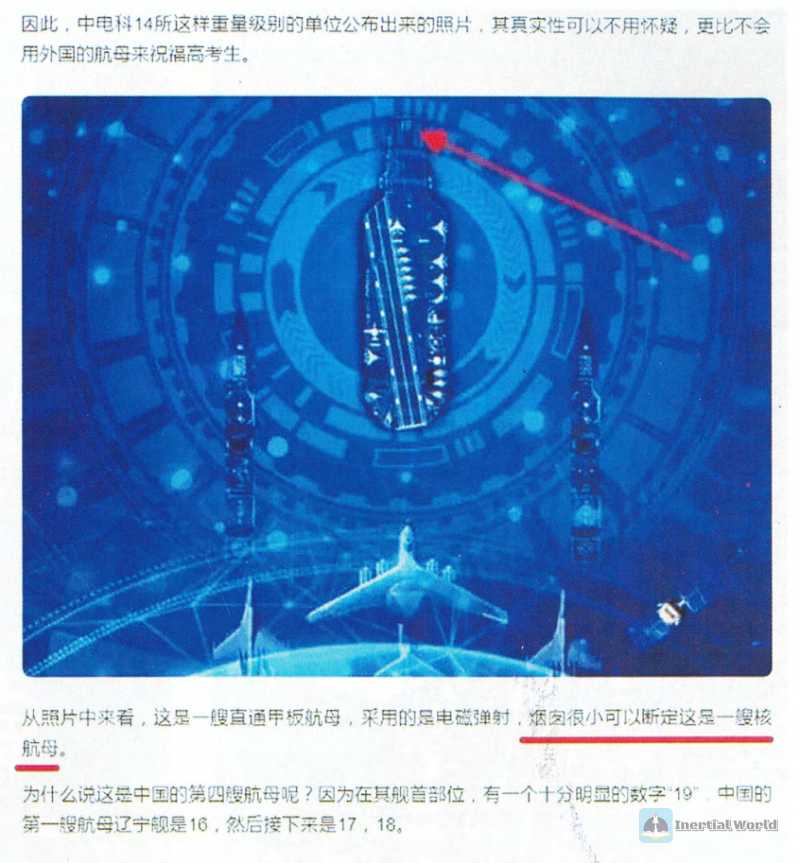
The increase in deck area will first bring about an increase in the number of carrier-based aircraft. With the expansion of the aircraft hangar area, the number of carrier-based aircraft of the entire new nuclear-powered aircraft carrier can reach about 80, including about 10 helicopters and about 70 carrier-based fighters, electronic warfare aircraft, and fixed-wing early warning aircraft.
The second thing is that the deck scheduling is more spacious and convenient. In terms of deck design and layout, the new domestically-produced nuclear-powered aircraft carrier has made new progress compared to conventional-powered aircraft carriers. There are three electromagnetic catapults and four electromagnetic arresting devices. Due to the advantages of my country’s electromagnetic catapult technology over the US steam catapult technology, the carrier-based aircraft dispatching efficiency of the new nuclear-powered aircraft carrier at least reaches or even exceeds the standard of the "Nimitz-class aircraft carrier."
After adopting the electromagnetic catapult, the new nuclear-powered aircraft carrier has several obvious advantages.
First, the dispatching efficiency of carrier-based aircraft has been greatly improved. Taking the US Navy’s "Gerald Ford" aircraft carrier as an example, the daily dispatching volume of carrier-based aircraft will be greatly increased, from the original 120 sorties per day of the "Nimitz" class to 160 sorties per day; its peak dispatching volume has also increased from the original 220~240 sorties/day to 270 sorties/day.
Second, small size and light weight. The components used in the electromagnetic catapult have higher energy and power density than the steam catapult, and its volume and weight are only about 50% of the steam catapult. Third, reduce the stress on the aircraft. Through fine control, the electromagnetic catapult can continuously correct the acceleration deviation in a very short time and control the peak-to-average acceleration ratio within 1.05. Previously, the peak-to-average ratio of the steam catapult reached a maximum of 2.0. As we all know, each catapult causes great damage to the aircraft. The electromagnetic catapult technology greatly reduces the stress on the aircraft and extends the service life of the aircraft. Fourth, high energy utilization. The efficiency of the steam catapult is generally around 6%, and the efficiency of the electromagnetic catapult is about 60%. The energy utilization rate is greatly improved, and the economy of the entire ship is also improved.
Fifth, high reliability. The electromagnetic catapult’s catapult operation is fault-tolerant, and it can still operate normally after two failures, and it has the ability to quickly adjust and correct errors. In addition, according to the design goals, the interval between major failures of the electromagnetic catapult will be three times that of the steam catapult. We know that the aircraft carrier that adopts catapult take-off technology, because there is no upturned ski-jump deck, the take-off and landing of its carrier-based aircraft is highly dependent on the catapult. If the catapult fails, the aircraft carrier loses its combat effectiveness. Therefore, the stronger the maintainability, the more beneficial it is for the aircraft carrier.
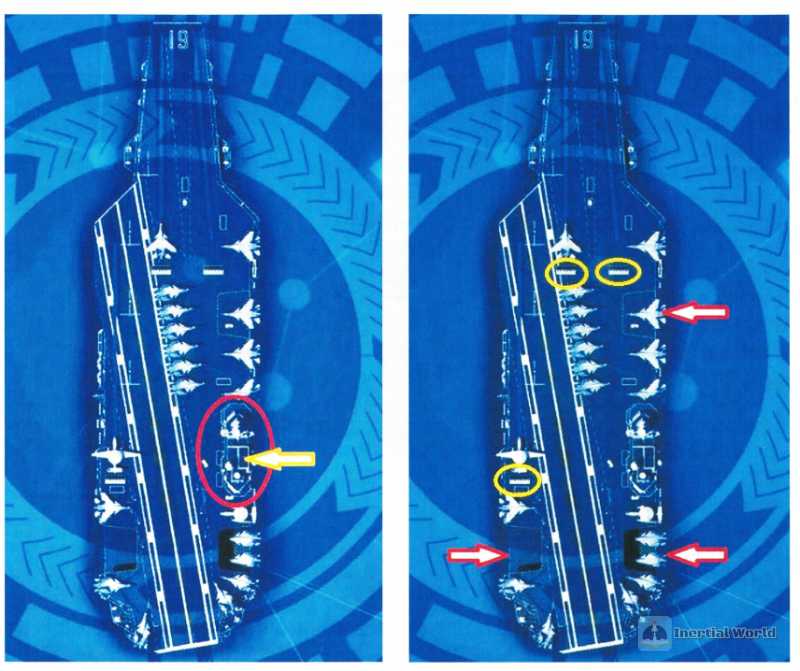
Plan. The Nanjing Institute’s plan can be regarded as an upgraded version of the "Fujian", with yellow circles and red arrows. =Electromagnetic catapult and elevator position
Sixth, reduce the number of operating and maintenance personnel. The electromagnetic catapult has an automatic monitoring system to provide fault information, greatly reduce the maintenance workload and the number of personnel required, and reduce the full life cycle cost. It is currently estimated that 35 fewer operating and maintenance personnel are required than the Yanqi catapult.
Seventh, the ability to launch aircraft has been greatly enhanced, expanding the scope of aircraft carriers’ ability to use aircraft. It can launch both manned and unmanned aircraft. The launch capacity has been increased from the current steam catapult’s maximum launch capacity of 75 trillion foot pounds to 90 trillion foot pounds. It can not only enable heavier and higher-takeoff-speed aircraft to board the ship, but also safely and stably launch small and light drones. Its flexible launch adjustment capability is not available in steam catapults. This makes it possible to use a variety of new carrier-based aircraft, including unmanned carrier-based attack aircraft, on new domestically-produced nuclear-powered aircraft carriers in the future.
Eighth, it is convenient for cabin layout. The installation volume of the electromagnetic catapult is about 20,000 cubic feet, which is only half of that of the steam catapult (the current volume of the steam catapult is 40,000 cubic feet). Since there is no need to lay a large number of steam pipes under the deck, a large amount of available space can be freed up under the deck, which is convenient for more efficient cabin layout.
In terms of deck management, the new domestic nuclear-powered aircraft carrier will also learn from the world’s advanced technologies and concepts, and make improvements and innovations. For example, the deck maintenance facilities similar to the "repair parking station" on the US CVN-21 "Ford" class aircraft carrier will be set up to reduce the use of trailers, so that carrier-based aircraft can slide to the deck maintenance area nearby without being towed by trailers, stop for maintenance, and then start the engine and re-enter the next catapult take-off point to wait for take-off. This is conducive to the barrier-free cyclic take-off and landing and maintenance of carrier-based aircraft in high-intensity combat.
In other aspects, the new domestic nuclear-powered aircraft carrier will continue the single island design of the previous domestic conventional-powered aircraft carrier, maintaining a certain continuity while innovating technology
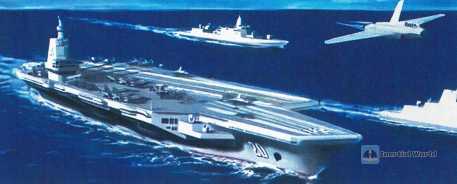
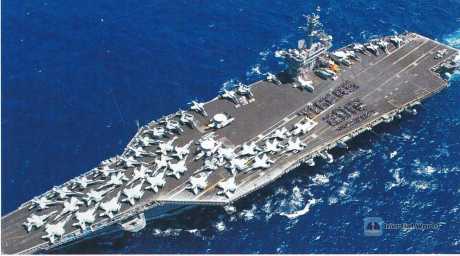
Adopt all-electric propulsion technology
Since the new domestic nuclear-powered aircraft carrier has a powerful power supply capacity of more than 60 megawatts, it is completely possible to use all-electric propulsion technology. At present, China Shipbuilding Industry Corporation has begun mass production of all-electric propulsion systems for ships with a power of 20 megawatts. It can be said that there is no technical obstacle to developing a more powerful all-electric propulsion system for aircraft carriers.
The all-electric propulsion system converts the original power energy on the ship into electric energy, provides more electricity to each electricity user on the ship, and comprehensively manages and utilizes the power of the entire ship, thereby effectively improving the power quality of each weapon and equipment on the ship. Due to the use of electric propulsion, the ship’s own noise can be reduced, and its acoustic signal characteristics are very good.
At the same time, the domestic all-electric propulsion technology is significantly different from the US solution. It uses my country’s independently developed and original medium-voltage DC electric propulsion technology. Therefore, it has significant advantages in reliability and comprehensive performance compared to the "Gerald Ford" with frequent failures. This will also become one of the technical advantages and highlights of the new domestic nuclear-powered aircraft carrier
Domestic nuclear power plant is the key
Since the new nuclear-powered aircraft carrier will adopt technologies such as electromagnetic catapults and all-electric propulsion, the power supply requirements for the power plant are extremely high, so a newly developed nuclear power plant, that is, a high-power pressurized water nuclear reactor, must be used. Taking the USS Gerald Ford nuclear-powered aircraft carrier as an example, it takes 16 megawatts of electricity to charge only four electromagnetic catapults at the same time. It can accurately control the catapult thrust over a large range, and can intersperse the launch of drones and manned aircraft weighing from several tons to thirty or forty tons. The average daily launch is 160 sorties, and the peak can reach 270 sorties. With such high energy consumption, traditional steam turbines cannot guarantee it at all. The reason why pressurized water reactors are used instead of other new concept nuclear reactors such as gas-cooled reactors is mainly because pressurized water reactors are currently the most mature technology and the most reliable performance. For example, the US "Gerald Ford" class new nuclear-powered aircraft carrier is equipped with two newly developed A1B pressurized water reactors.
China has long had successful experience in the development of nuclear reactors for ships. The nuclear reactor power units on the 093 and 094 nuclear-powered submarines were developed by my country itself. So, is it possible to transplant the nuclear reactor device on the nuclear-powered submarine directly to the new nuclear-powered aircraft carrier? There are two main problems here. The first is insufficient power. According to some current analysis, the nuclear reactor power used on my country’s Type 093 nuclear-powered submarine should be about 40,000 horsepower, which is enough to propel a nuclear submarine with a displacement of more than 6,000 tons to a maximum speed of 32 knots. However, the total power of the two nuclear reactors does not exceed 100,000 horsepower, which is far from the total power of the 200,000 horsepower power unit of the "Liaoning", and there is a significant gap with the 260,000 horsepower "Nimitz" class and 280,000 horsepower "Ford" class. The second is that reliability is questionable. France transplanted the K15 nuclear reactor from the nuclear-powered submarine on the "Charles de Gaulle" nuclear-powered aircraft carrier, but its frequent failures have become the biggest shortcoming that drags down the combat effectiveness of the "Charles de Gaulle". Therefore, direct transplantation is obviously unrealistic, but it is technically feasible to develop a nuclear reactor device dedicated to aircraft carriers based on the mature model technology of the nuclear reactor of the existing nuclear submarine.
First, aircraft carriers have larger space and displacement, and the weight and size requirements for nuclear reactors are more relaxed than those for nuclear submarines. Therefore, they can use fuels with higher thermophysical properties, with an efficiency of more than 25%, while the efficiency of submarine nuclear power is only 18-20%. Secondly, aircraft carriers do not have high concealment requirements like submarines, do not need reactors with high natural circulation capabilities, do not need to use bulky "rafts" to reduce noise, and do not need to consider frequent power changes and long-term low-noise cruising conditions like submarines. Aircraft carriers usually sail at high speeds, and nuclear power operates at high power. Therefore, the nuclear power reactor of an aircraft carrier is completely developed for the purpose of achieving high power. It is expected that the new nuclear-powered aircraft carrier pressurized water reactor will have a power unit efficiency of about 25% and a total power of about 250,000 horsepower, which can fully achieve the goal of a maximum speed of 28 to 30 knots for a standard displacement of 65,000 tons. The aircraft carrier uses 4 steam turbines and 4-axis propulsion. The core reactor is expected to have a service life of about 15 to 20 years.
The combat capability of the domestically-produced new aircraft carrier has been greatly improved after adopting nuclear power, and its combat effectiveness has undergone substantial changes compared with the domestically-produced conventional-powered aircraft carriers represented by the "Fujian". First of all, nuclear propulsion has greatly improved the endurance and speed of aircraft carriers. For example, the endurance of the US "Nimitz" class nuclear-powered aircraft carrier is 1 million nautical miles, and a furnace of nuclear fuel can be used for 15-30 years; while the conventional-powered aircraft carrier "Kitty Hawk" is only 12,000 nautical miles, and can only operate for 7 days and nights without refueling. The situation of the "Liaoning" is similar. For example, the nuclear-powered aircraft carrier "Enterprise" conducted a round-the-world voyage training in 1964, and no refueling was carried out for 65 days, which fully demonstrated the superiority of nuclear-powered aircraft carriers. Nuclear-powered aircraft carriers can continue to sail at a high speed of 30 knots, with good maneuverability, which is conducive to avoiding storms and enhancing combat capabilities under severe weather conditions; it can reduce the possibility of being attacked by enemy submarines. The combat range and maneuverability of nuclear-powered aircraft carriers are incomparable to conventional-powered aircraft carriers.

Secondly, it can save a lot of volume and weight of fuel for conventional power units, and can be used to carry 50-70% more aviation gasoline and ammunition, enhancing sustained combat capabilities and reducing logistical burdens. It can also load some fuel for supplying escort ships, reducing dependence on supply ships.
Third, the nuclear power plant of the aircraft carrier does not need air intake and exhaust ducts, which brings many benefits: no smoke turbulence, greatly reducing interference with the deck operations of carrier-based aircraft, improving the safety of aircraft take-off and landing, and reducing the accident rate; saving space is conducive to the overall layout and island bridge, which can reduce the size of the island bridge and carry more aircraft: it can avoid the corrosion of various electronic equipment and aircraft on the flight deck by smoke; it eliminates the noise and infrared radiation of smoke exhaust, which is conducive to the defense of infrared guided missiles; it improves the vitality of the ship. When it is attacked by enemy nuclear or chemical weapons, the hull is easy to seal and clean, and the toxic high-temperature smoke after being hit will not drill into the power compartment, hangar, etc.;
Fourth, the nuclear power reserve energy is large, there is sufficient steam and electricity supply, which is conducive to the continuous operation of the aircraft steam catapult or electromagnetic catapult and will not affect Speed; the ship can use various equipment that consumes a lot of energy but is beneficial to the crew without scruples, such as large-capacity air conditioners and seawater desalination devices, which can produce thousands of tons of fresh water every day, greatly improving the living conditions of the crew.
Fifth, the speed is easy to adjust and flexible. When encountering an enemy, it can easily accelerate to evade maneuvers, from full speed forward to stop and then to full speed backward, just adjust the throttle.
Advanced command and control system
The next generation of domestically produced new nuclear-powered aircraft carriers will adopt more advanced C4ISR system (command, control, communication, computer and intelligence, surveillance, and reconnaissance system) technology and automation equipment, fully support network-centric warfare capabilities, and can achieve "interconnection, intercommunication, and interoperability" with other weapons and services. And computer monitors, personal digital assistants, and handheld computers will be widely used to replace manuals and reference materials used by operators to facilitate daily storage and search by operators.
The new nuclear-powered aircraft carrier will basically realize the online platform, online weapons, online ammunition and online accessories by installing information grid equipment and the Navy’s "firepower network" system, active network guidance and emergency event handling system, intelligent virtual guide, digital video map, advanced mission computer and other advanced equipment, and its networking level and network-centric warfare capability have made a qualitative leap.
Take carrier-based aircraft as an example. Carrier-based aircraft without network-centric warfare capability are only relatively isolated weapon platforms, and their combat effectiveness can only be a superposition of quantity. Carrier-based aircraft with network-centric warfare capability not only have the ability to independently obtain information and autonomously strike targets, but also can receive various information and instructions from the army, navy, marines, air force, and aerospace and space-based platforms online. At the same time, new carrier-based aircraft such as the J-31, as a node in network warfare, both serve the entire network and are served by the entire network. The attack weapons mounted on it can not only accept the control of the machine, but also accept the control of other authorized users online. Who to attack, who to attack, at what time, place, direction, and what weapons to use are all based on cloud computing network coordination. Its timeliness and effectiveness cannot be compared with the simple addition of quantity.
Taking the US nuclear-powered aircraft carrier "Ford" as an example, it can carry 75 fixed-wing carrier-based aircraft, and the number of targets it strikes will reach more than 2,000. Therefore, the combat effectiveness of the new domestic nuclear-powered aircraft carrier will be at least three times that of the previous generation of conventional-powered aircraft carriers.

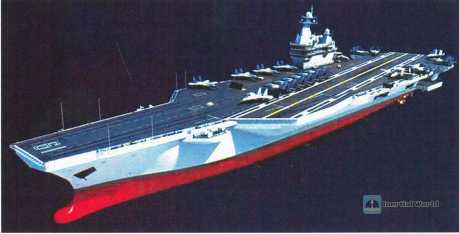
Weapon system upgrade
Different from the inherited shipborne weapon configuration of the previous generation of domestic conventional-powered aircraft carriers, the new nuclear-powered aircraft carrier will achieve a considerable technological leap in shipborne weapons.
On the new aircraft carrier, it is possible that ship-borne laser close-in defense weapons will first be used to replace the traditional missile and artillery close-in defense weapon system composed of the "Haihongqi"-10 and 1130 "Wanfa" close-in defense guns. The new ship-borne laser close-in defense weapon directly uses the electrical energy provided by the ship’s power system to drive the weapon launch. Its free electron laser has high power and can achieve high-precision target interception and strike. At present, the United States has conducted relevant tests on ship-borne laser close-in defense weapons. During the test, the laser weapon system installed on the warship, under the guidance of the warship’s radar system, fired at four drones flying at a speed of 480 kilometers per hour about 3.2 kilometers away from the warship. The laser’s 32-kilowatt energy burned the drones within seconds. In the future, the power of ship-borne laser close-in defense weapons may increase to 100-200 kilowatts, enough to illuminate and destroy incoming supersonic anti-ship missiles.
Secondly, in terms of carrier-based aircraft, the new nuclear-powered aircraft carrier will use the domestic fifth-generation stealth carrier-based fighter, namely the J-35, as the main air control aircraft, and the carrier-based unmanned attack aircraft developed from the stealth drone will mainly undertake sea and ground strike missions. Based on the J-35 medium-sized carrier-based fighter, electronic jamming models can also be developed to cooperate with fighters. The use of new carrier-based aircraft will greatly enhance the combat effectiveness of domestic nuclear-powered aircraft carriers.
Currently, models of the J-35 fighter have appeared on the "Fujian" and "Liaoning" ships. From this point of view, the J-35 fifth-generation carrier-based fighter is rapidly forming combat effectiveness and accelerating the running-in with the aircraft carrier platform at a speed beyond the outside world’s estimation. It is expected that when the construction of the domestic nuclear-powered aircraft carrier is completed and sea trials are carried out, the J-35 fighter will appear on its deck at the fastest speed.
Conclusion
For China, it is imperative to develop high-performance aircraft carriers with nuclear power plants. According to a military report written by the US Navy, China’s domestically produced new nuclear-powered aircraft carriers will join the Chinese Navy between 2025 and 2030. According to some military experts of the Chinese Navy, to safeguard China’s maritime rights and interests and national security, China needs at least 4 to 5 aircraft carrier formations. By then, as the youngest, most technologically advanced, longest-range and most combat-capable ship among China’s aircraft carriers, domestically produced nuclear-powered aircraft carriers will surely become the "blue sea defender" of China’s maritime interests. According to the statement of the Navy Political Commissar, the domestically produced nuclear-powered aircraft carrier is getting closer and closer to being launched!






